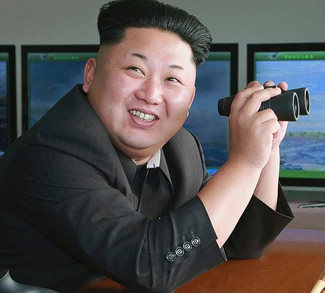Donald Trump’s victory in the 2024 US presidential election has reignited global discussions on US foreign policy, especially toward Asia. As a region marked by geopolitical tensions and economic dynamism, Asia is central to US strategy, which will continue to be shaped by the ongoing US-China rivalry, North Korea’s nuclear capabilities, and the need to secure strong partnerships with allies like Japan, South Korea, and India. Trump’s return to the presidency has prompted concerns and speculation that his “America First” approach might lead to shifts in US policies. However, while Trump’s tone and tactics may differ from his predecessor, the underlying direction of US foreign policy in Asia is unlikely to see major changes.
This continuity is largely due to the bipartisan consensus that has taken root over recent administrations, emphasizing the need to counterbalance China’s growing influence and maintain stability in the Indo-Pacific. Both Democratic and Republican leaders have increasingly viewed Asia as central to US strategic interests, a perspective that has become entrenched within national security and foreign policy institutions. Trump’s campaign rhetoric and policy statements reflect a clear commitment to shared strategic goals, signaling a continuity in objectives, even though his administration may pursue them with a more assertive approach, especially in trade and economic policies.
Throughout the presidential campaign, Trump repeatedly stressed a strong stance against China, reflecting a continuation of the hardline approach he took during his first term. In his speeches, Trump framed China as America’s primary adversary, blaming Beijing for “unfair trade practices,” “intellectual property theft,” and what he claimed was a lack of accountability regarding the COVID-19 pandemic. He outlined plans to “bring jobs back to America” and reduce economic dependencies on China, aiming to strengthen domestic production and manufacturing. Trump’s firm language mirrors sentiments voiced across party lines, as both Democrats and Republicans view China’s growing influence as a critical threat to US economic and strategic interests. By rallying around the China issue, Trump is tapping into a national consensus rather than diverging from the policy direction that has already been set in motion by previous administrations.
The Biden administration laid a comprehensive framework for Indo-Pacific engagement, focused on strengthening alliances with countries in the region. This approach included initiatives such as the Quadrilateral Security Dialogue (the “Quad”) with Japan, Australia and India, as well as strengthening defense commitments to South Korea and Japan. Biden also took steps to reinforce the Association of Southeast Asian Nations (ASEAN) as a critical partner, aiming to counter China’s economic and military expansion through collective security measures and regional economic partnerships. Trump’s approach is expected to build upon, rather than dismantle, these alliances. Trump, despite his inclination toward unilateralism, will likely recognize the strategic value of such alliances in achieving a balance of power in the region.
Additionally, the United States has been moving toward economic “decoupling” from China, a policy that Trump has advocated and that gained significant traction during the COVID-19 pandemic. With supply chain vulnerabilities exposed by the pandemic, there has been a stronger push within the U.S. to reduce reliance on Chinese manufacturing. The Biden administration initiated measures such as the CHIPS and Science Act to revitalize domestic manufacturing of semiconductors, a sector where China has become a dominant player. Trump’s return could accelerate these efforts, as he has promised to impose higher tariffs on Chinese goods and incentivize US companies to return manufacturing jobs to America. This approach aligns with a larger, bipartisan goal to protect US economic security from what is perceived as an increasingly assertive and competitive China.
Trump’s emphasis on protecting US jobs and industries from perceived threats aligns with a populist approach, yet it does not diverge significantly from recent policy shifts initiated by both parties. In fact, Trump’s aggressive stance could strengthen initiatives begun under the Biden administration, including supply chain diversification and infrastructure investment that have implications for US interests in Asia. It is important to note that US policies toward Asia are fundamentally guided by the recognition that economic and military security are interconnected, especially when dealing with a strategic competitor like China.
Furthermore, the strategic significance of the Indo-Pacific region transcends individual presidential agendas due to its critical role in global trade, military presence, and energy security. The United States maintains significant military assets in the region, including bases in Japan, South Korea and Guam, all of which are instrumental for deterring aggression and ensuring freedom of navigation in contested waters like the South China Sea. Trump, during his previous term, emphasized “freedom of navigation” as a cornerstone of US foreign policy, particularly in waters where China has pursued territorial claims. Trump’s likely focus on military deterrence in Asia will align closely with longstanding goals of ensuring open and secure sea lanes, reflecting a broader consensus on maintaining American influence in the region.
A potential point of variation under Trump’s renewed leadership could be the tone of diplomatic engagements. Whereas Biden pursued multilateralism and prioritized diplomatic channels, Trump may revert to a more transactional style, emphasizing economic deals and direct negotiations. For instance, Trump’s relationship with North Korean leader Kim Jong-un may resurface as a strategy, with the aim of negotiating denuclearization through personal diplomacy. However, the fundamental policy goal—limiting North Korea’s nuclear threat—remains unchanged, underscoring that while Trump’s methods might vary, the strategic objectives are consistent.
Trump’s return is unlikely to alter these broad objectives because the structural forces shaping US foreign policy in Asia are driven by long-term interests rather than individual leadership preferences. The sustained focus on countering China, enhancing regional alliances and protecting economic security points to a durable strategy that transcends party lines. For example, despite differences in approach, both the Trump and Biden administrations prioritized the Quad alliance, recognizing it as an essential forum for strategic collaboration in the Indo-Pacific.
In essence, while Trump’s style may bring a renewed assertiveness or directness to US-Asia relations, the fundamental goals of US foreign policy are expected to remain constant. The interdependent nature of economic, security and diplomatic factors in the region creates a stable foundation that each administration, regardless of party, has sought to maintain. This policy stance toward Asia is further shaped by the understanding that its influence in this region is essential for global stability and security. As Trump resumes his leadership, he will inherit a policy framework deeply embedded within US institutions and aligned with bipartisan goals, reinforcing the notion that Washington’s approach to Asia, despite shifts in style, will endure.
The views expressed in this article belong to the author(s) alone and do not necessarily reflect those of Geopoliticalmonitor.com.




